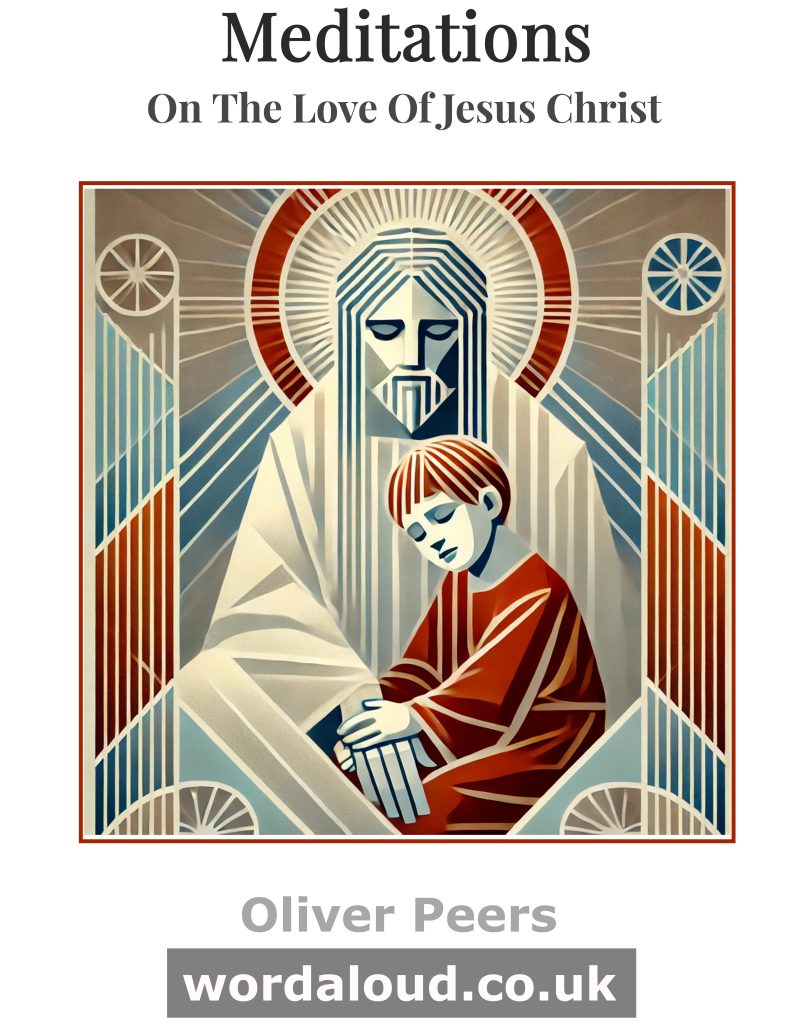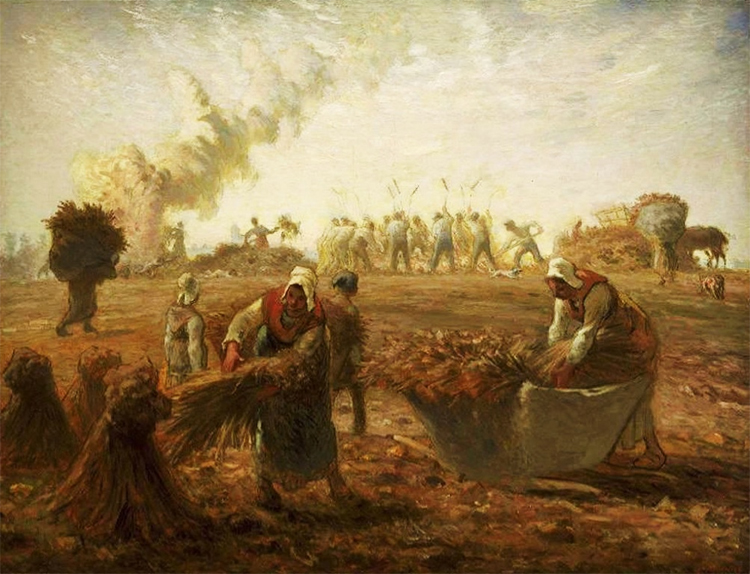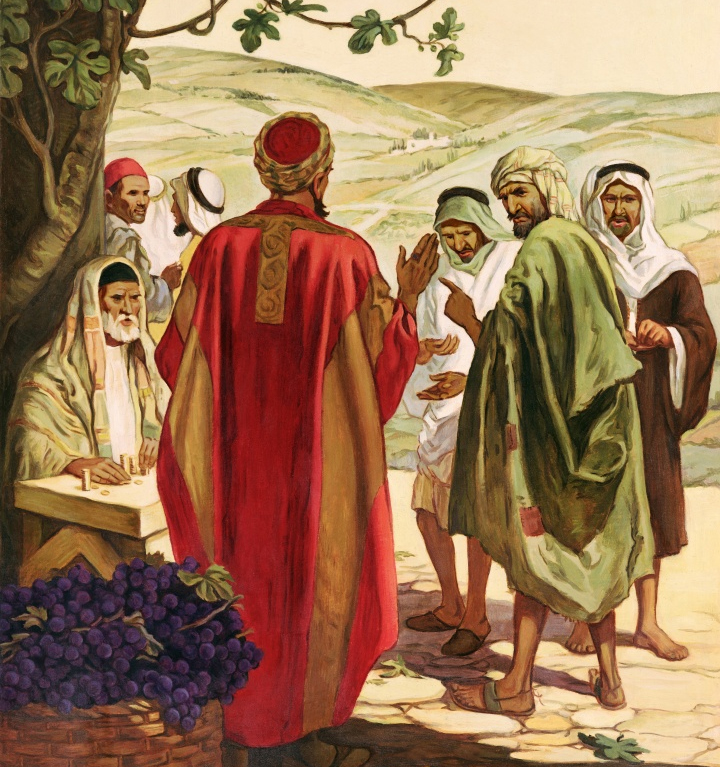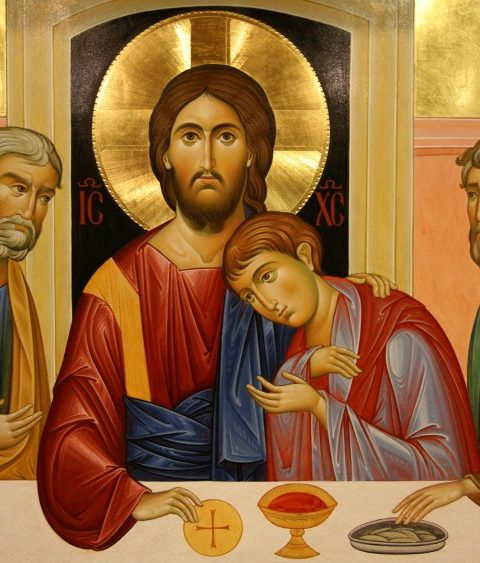The Gospel Of Saint Matthew 23: 1-12 | King James Audio Bible
Psalm 84:1–4,10 (Hebrew 84 / Latin 83) — ‘How lovely are your dwelling places, O LORD of hosts! My soul longs… Blessed is the man whose strength is in you, in whose heart are the highways to Zion.’
Theme: Joy of pilgrimage and abiding in God’s house — the most Temple-saturated psalm.
URL: https://wordaloud.co.uk/audio/kjv/listen-to-the-bible-psalm-84-king-james-audio-bible-kjv-joy-of-worship-in-the-temple-prayer-with-jesus-and-king-david-true-faith-in-god-pray-the-psalms/psalm-kjv/
‘I rejoiced when I heard them say, “Let us go to God’s house.”‘ Psalm 122/121
Prayer with Jesus as the Temple of the New Testament

What Was Second Temple Judaism?
Second Temple Judaism refers to the religious and cultural practices of the Jewish people during the Second Temple period, which lasted from the construction of the Second Temple in Jerusalem in 516 BC until its destruction by the Romans in 70 CE. During this time, Judaism was marked by the development of various religious movements and the emergence of important religious figures such as the Pharisees, Sadducees, and Essenes.
The Second Temple period saw the continuation of traditional Jewish practices such as the study of Torah and the observance of the festivals and rituals outlined in the Hebrew Bible. It also saw the development of new religious practices and beliefs, including the belief in the resurrection of the dead, which became central to the Pharisaic movement.
The Second Temple period was also a time of great political and social upheaval for the Jewish people, as they were subject to foreign rule and faced numerous challenges to their religious and cultural practices. Despite these challenges, the Jewish people remained deeply committed to their faith and traditions, and the teachings and practices of Second Temple Judaism continue to influence Jewish thought and practice to this day.
What Was The First Temple?
The First Temple was the main temple of the ancient Kingdom of Israel, located in the city of Jerusalem. It was built by King Solomon, who ruled Israel in the 10th century BC, and was considered the centre of Jewish religious and cultural life. The First Temple was built on Mount Moriah, the same site where Abraham had offered his son Isaac as a sacrifice. According to the Hebrew Bible, the Ark of the Covenant, which contained the tablets of the Ten Commandments, was kept in the innermost chamber of the First Temple.
The First Temple was a place of great significance for the Jewish people, and it played a central role in their religious and cultural life. It was the site of important religious festivals and rituals, and it was also a place of political and economic power. The First Temple was destroyed by the Babylonians in 586 BC, and its destruction had a profound impact on the Jewish people and their history. The rebuilding of the Second Temple in Jerusalem after the Babylonian exile is considered a major event in Jewish history and is still remembered and celebrated by Jews today.

Explain Further What Happened In 586 BC
In 586 BC, the city of Jerusalem and the First Temple were conquered and destroyed by the Babylonians, a powerful empire in ancient Mesopotamia. The Babylonian conquest of Jerusalem was a devastating event for the Jewish people, as it marked the end of their independence as a nation and the beginning of a period of exile in which many Jews were forced to leave their homeland and live in Babylon.
According to the Hebrew Bible, the Babylonians destroyed the First Temple and carried off many of the people of Jerusalem into exile, including the king, the royal family, and many of the leading officials and priests. The exile of the Jewish people to Babylon is known as the Babylonian Captivity, and it is considered a major event in Jewish history.
The Babylonian Captivity had a profound impact on the Jewish people and their religion. Many Jews were forced to adapt to a new way of life in a foreign land, and they faced numerous challenges in preserving their traditions and practices. At the same time, the exile also provided an opportunity for the Jewish people to reflect on their history and faith, and it contributed to the development of new religious ideas and practices that continue to influence Judaism to this day.
Was Jewish Scripture Substantially Reworked During The Babylonian Captivity?
It is generally believed that the Babylonian Captivity had a significant impact on the development of Jewish literature and religion. During the exile, the Jewish people were forced to adapt to a new way of life in a foreign land, and they faced numerous challenges in preserving their traditions and practices. In response to these challenges, many Jews began to focus more on the study and interpretation of the Hebrew Bible, and they began to develop new religious ideas and practices.
One significant development during this time was the emergence of the oral tradition of the Mishnah, which is a collection of Jewish legal interpretations and teachings. The Mishnah is believed to have been compiled and written down during the period of the Second Temple, which followed the Babylonian Captivity.
It is also thought that the Babylonian Captivity had an impact on the composition of the Hebrew Bible. Many of the books of the Hebrew Bible, including the books of Psalms, Isaiah, and Lamentations, contain themes and language that suggest they were written during or shortly after the exile. These books often reflect on the experience of exile and the challenges that the Jewish people faced during this time, and they offer hope and comfort to those who were in captivity.
Overall, the Babylonian Captivity had a profound impact on the Jewish people and their religion, and it contributed to the development of new religious ideas and practices that continue to influence Judaism to this day.
What About The Composition Of The Torah – The Pentateuch? Give Views And Interpretations
There are several different views and interpretations regarding the composition of the Torah. Some scholars believe that the Torah was written by a single author, possibly Moses, who recorded the stories and teachings that were passed down orally through the generations. Others believe that the Torah is a composite work, made up of a collection of stories and teachings that were written and compiled by different authors over a period of time.
One widely accepted theory is that the Torah was composed during the period of the Babylonian Captivity, when many Jews were forced to leave their homeland and live in exile in Babylon. According to this theory, the Torah was written as a way of preserving the traditions and teachings of the Jewish people during a time of great upheaval and change.
Other scholars believe that the Torah is a more recent document, written after the return of the Jews from exile in Babylon. These scholars point to linguistic and historical evidence that suggests the Torah was written during the period of the Second Temple, which lasted from the construction of the Second Temple in Jerusalem in 516 BC until its destruction by the Romans in 70 CE.
Overall, the exact origins and composition of the Torah are the subject of much debate and scholarship, and there is no consensus on the precise nature of its authorship and development.
How Did The Restoration Of The Temple Happen?
The restoration of the Second Temple in Jerusalem occurred after the Jews returned from exile in Babylon. According to the Hebrew Bible, the Persians, who had conquered the Babylonians, allowed the Jews to return to their homeland and rebuild the temple. This event is known as the “return from exile” or the “restoration of the temple,” and it is considered a major event in Jewish history.
The rebuilding of the Second Temple was led by a group of Jewish leaders known as the “returnees,” who were determined to restore the temple and the Jewish community in Jerusalem. The returnees faced numerous challenges, including opposition from their neighbours and the need to rebuild the city and the temple from ruins. Despite these challenges, they were able to rebuild the temple and re-establish the Jewish community in Jerusalem.
The rebuilding of the Second Temple was a significant event for the Jewish people, as it marked the end of the exile and the beginning of a new era of independence and prosperity. The Second Temple became the centre of Jewish religious and cultural life, and it played a central role in the development of Jewish thought and practice. The Second Temple was destroyed by the Romans in 70 CE, but its memory and influence continue to shape Jewish thought and practice to this day.
Was The Ark Of The Covenant Present?
According to the Hebrew Bible, the Ark of the Covenant was a sacred chest that contained the tablets of the Ten Commandments, as well as other important religious objects. The Ark was kept in the innermost chamber of the First Temple, which was located in Jerusalem. When the First Temple was destroyed by the Babylonians in 586 BC, the Ark is believed to have been taken away and lost.
There is no mention of the Ark of the Covenant in the accounts of the rebuilding of the Second Temple in Jerusalem after the exile in Babylon. Some scholars believe that the Ark may have been lost or destroyed during the Babylonian conquest of Jerusalem, while others speculate that it may have been hidden or removed to a safe place before the temple was destroyed.
There are many theories and legends surrounding the Ark of the Covenant, and it continues to be a source of fascination and mystery for many people. However, there is no concrete evidence of its whereabouts or what happened to it after the destruction of the First Temple.
Explain More About What Happened In And Around 516 BC
In 516 BCE, the Second Temple was constructed in Jerusalem, after the Jews returned from exile in Babylon. This event is considered a major event in Jewish history, as it marked the end of the exile and the beginning of a new era of independence and prosperity for the Jewish people.
The Second Temple was built on the same site as the First Temple, which had been destroyed by the Babylonians in 586 BC. The rebuilding of the temple was led by a group of Jewish leaders known as the “returnees,” who were determined to restore the temple and the Jewish community in Jerusalem. The returnees faced numerous challenges, including opposition from their neighbours and the need to rebuild the city and the temple from ruins. Despite these challenges, they were able to rebuild the temple and re-establish the Jewish community in Jerusalem.
The Second Temple was a place of great significance for the Jewish people, and it played a central role in their religious and cultural life. It was the site of important festivals and rituals, and it was also a place of political and economic power. The Second Temple was destroyed by the Romans in 70 CE, but its memory and influence continue to shape Jewish thought and practice to this day.
Develop Re. 586 BC With Detail
In 586 BC, the city of Jerusalem and the First Temple were conquered and destroyed by the Babylonians, a powerful empire in ancient Mesopotamia. The Babylonian conquest of Jerusalem was a devastating event for the Jewish people, as it marked the end of their independence as a nation and the beginning of a period of exile in which many Jews were forced to leave their homeland and live in Babylon.
According to the Hebrew Bible, the Babylonians destroyed the First Temple and carried off many of the people of Jerusalem into exile, including the king, the royal family, and many of the leading officials and priests. The exile of the Jewish people to Babylon is known as the Babylonian Captivity, and it is considered a major event in Jewish history.
The Babylonian Captivity had a profound impact on the Jewish people and their religion. Many Jews were forced to adapt to a new way of life in a foreign land, and they faced numerous challenges in preserving their traditions and practices. At the same time, the exile also provided an opportunity for the Jewish people to reflect on their history and faith, and it contributed to the development of new religious ideas and practices that continue to influence Judaism to this day.
The Babylonian Captivity also had significant political and historical consequences. It marked the end of the Kingdom of Judah and the beginning of a new period in Jewish history, in which the Jewish people were subject to foreign rule and faced numerous challenges to their religious and cultural practices. Despite these challenges, the Jewish people remained deeply committed to their faith and traditions, and the memory of the Babylonian Captivity has had a lasting impact on Jewish thought and practice.
Develop Re. 516 BC With Detail
In 516 BC, the Second Temple was constructed in Jerusalem, after the Jews returned from exile in Babylon. This event is considered a major event in Jewish history, as it marked the end of the exile and the beginning of a new era of independence and prosperity for the Jewish people.
The Second Temple was built on the same site as the First Temple, which had been destroyed by the Babylonians in 586 BC. The rebuilding of the temple was led by a group of Jewish leaders known as the “returnees,” who were determined to restore the temple and the Jewish community in Jerusalem. The returnees faced numerous challenges, including opposition from their neighbours and the need to rebuild the city and the temple from ruins. Despite these challenges, they were able to rebuild the temple and re-establish the Jewish community in Jerusalem.
The Second Temple was a place of great significance for the Jewish people, and it played a central role in their religious and cultural life. It was the site of important festivals and rituals, and it was also a place of political and economic power. The Second Temple was destroyed by the Romans in 70 CE, but its memory and influence continue to shape Jewish thought and practice to this day.
The period of the Second Temple, which lasted from 516 BCE until its destruction in 70 CE, was a time of great political and social upheaval for the Jewish people. They were subject to foreign rule and faced numerous challenges to their religious and cultural practices. Despite these challenges, the Jewish people remained deeply committed to their faith and traditions, and the teachings and practices of Second Temple Judaism continue to influence Jewish thought and practice to this day.
Develop – Include Discussion Of Herod
The construction of the Second Temple in Jerusalem occurred after the Jews returned from exile in Babylon in the 6th century BC. The rebuilding of the temple was led by a group of Jewish leaders known as the “returnees,” who were determined to restore the temple and the Jewish community in Jerusalem. The returnees faced numerous challenges, including opposition from their neighbours and the need to rebuild the city and the temple from ruins. Despite these challenges, they were able to rebuild the temple and re-establish the Jewish community in Jerusalem.
The Second Temple was a place of great significance for the Jewish people, and it played a central role in their religious and cultural life. It was the site of important festivals and rituals, and it was also a place of political and economic power. The Second Temple was destroyed by the Romans in 70 CE, but its memory and influence continue to shape Jewish thought and practice to this day.
Herod the Great, who ruled over the Roman province of Judea in the 1st century BC, is also associated with the construction of the Second Temple. Herod is known for his ambitious building projects, which included the expansion and renovation of the Second Temple in Jerusalem. He also built a number of other important structures, including the fortresses of Masada and Herodium, as well as a number of palaces and public buildings.
While Herod is often remembered for his reputation as a cruel and ruthless ruler, he is also credited with making significant contributions to the development of Jewish culture and religion. The renovation of the Second Temple and the construction of other important buildings had a lasting impact on the Jewish people, and they continue to be revered and remembered to this day.
What Happened In AD70?
In AD 70, the Second Temple in Jerusalem was destroyed by the Romans. This event is considered a major turning point in Jewish history, as it marked the end of the temple and the beginning of a new period of Jewish history.
The destruction of the Second Temple occurred during a time of great political and social upheaval for the Jewish people. They were subjected to foreign rule and faced numerous challenges to their religious and cultural practices. The Romans had occupied Jerusalem and the surrounding region for many years, and tensions between the Jews and the Romans were high.
The destruction of the Second Temple was the result of a series of events that began with a Jewish revolt against Roman rule in 66 CE. The Romans responded to the revolt with force, and in 70 CE they besieged and captured the city of Jerusalem. During the siege, the Romans destroyed much of the city, including the Second Temple, which was a symbol of Jewish independence and pride.
The destruction of the Second Temple had a profound impact on the Jewish people and their religion. It marked the end of an era and the beginning of a new period of Jewish history, in which the Jewish people were subject to foreign rule and faced numerous challenges to their religious and cultural practices. The memory of the destruction of the temple has had a lasting impact on Jewish thought and practice, and it continues to be remembered and commemorated by Jews to this day.
Discuss The Impact On Christianity Of The Destruction Of The Temple In AD 70
The destruction of the Second Temple in Jerusalem in AD 70 had a significant impact on Christianity, as it marked the end of an era and the beginning of a new period of Jewish history. At the time of the destruction of the temple, Christianity was still a small and largely Jewish sect, and the events of AD 70 had a profound effect on the development of the religion.
One of the most significant impacts of the destruction of the temple on Christianity was the shift in the focus of the religion from the temple and its rituals to the person of Jesus and his teachings. After the destruction of the temple, the Jewish people were no longer able to participate in the temple sacrifices and rituals that had been central to their faith, and they began to focus more on the interpretation of the Hebrew Bible and the teachings of Jesus.
Another impact of the destruction of the temple on Christianity was the spread of the religion beyond the borders of Judea. Many Jews were forced to flee Jerusalem and the surrounding region after the destruction of the temple, and they took their faith with them as they travelled to other parts of the Roman Empire. This helped to spread the message of Christianity to new areas and contributed to the growth of the religion.
Additionally:
- The destruction of the temple marked the end of an era in Jewish history and the beginning of a new period of foreign rule and oppression. This had a profound effect on the Jewish people, and it contributed to a sense of despair and disillusionment among many Jews. Some Jews turned to Christianity as a way to find hope and meaning in a difficult and uncertain time.
- The destruction of the temple also led to a shift in the focus of Jewish religious practice from the temple and its rituals to the study and interpretation of the Hebrew Bible. This helped to foster a greater emphasis on the importance of the written word in Judaism and contributed to the development of new religious ideas and practices.
- The spread of Christianity beyond the borders of Judea after the destruction of the temple helped to bring the religion to a wider audience and contributed to its growth. Many Jews who were forced to flee Jerusalem and the surrounding region after the destruction of the temple took their faith with them as they travelled to other parts of the Roman Empire, and this helped to spread the message of Christianity to new areas.
- The destruction of the temple also had a significant impact on the development of Christian theology. The early Christians believed that the destruction of the temple was a fulfilment of prophecies in the Hebrew Bible, and they saw it as a sign that the end of the world was near. This belief contributed to a sense of urgency among the early Christians and helped to shape their understanding of the role of Jesus and the importance of spreading the message of Christianity to others.
Is Jesus Christ The Temple?
Some Christian traditions view Jesus Christ as being the “temple” of God, in the sense that he is considered to be the embodiment of God’s presence on earth. This belief is based on the idea that Jesus was more than just a human being, but was also fully divine, and that he came to earth as a manifestation of God’s presence and love for humanity.
According to Christian belief, Jesus was the fulfilment of God’s plan of salvation for humanity, and he is considered to be the means by which people can have a relationship with God. In this sense, Jesus is seen as the “temple” of God, because he is the place where people can encounter and experience the presence of God.
This belief is rooted in the idea that the temple in Jerusalem was considered to be the place where God’s presence was most fully revealed, and that it was the centre of Jewish worship and devotion. By viewing Jesus as the “temple” of God, Christians believe that they can have a direct and personal relationship with God, and that they can experience his presence and love in their own lives.
The Temple In The Psalms
Psalm 5:7 (Hebrew 5 / Latin 5) — “I will enter your house in the multitude of your mercy.”
Theme: Morning prayer and entrance into God’s house for worship.
URL: https://wordaloud.co.uk/audio/kjv/psalm-5-king-james-audio-bible-kjv-reading-and-interpretation-trust-in-god-for-deliverance-from-enemies/psalm-kjv/
Psalm 11:4 (Hebrew 11 / Latin 10) — “The LORD is in his holy temple; the LORD’s throne is in heaven.”
Theme: The Temple as God’s sovereign dwelling and seat of judgment.
URL: https://wordaloud.co.uk/audio/kjv/psalm-11-king-james-audio-bible-kjv-song-of-trust-in-god-prayer-with-jesus-revolution-in-christian-prayer-true-faith-in-god-arise-lord/psalm-kjv/
Psalm 15:1 (Hebrew 15 / Latin 14) — “LORD, who shall abide in your tent? Who shall dwell on your holy hill?”
Theme: Those who are worthy to dwell in God’s sanctuary.
URL: https://wordaloud.co.uk/audio/kjv/psalm-15-king-james-audio-bible-kjv-who-shall-abide-in-gods-sanctuary-prayer-with-jesus-revolution-in-christian-prayer-a-psalm-of-david-true-faith-in-god-arise-lord/psalm-kjv/
Psalm 27:4–6 (Hebrew 27 / Latin 26) — “One thing I have asked of the LORD… to dwell in the house of the LORD all the days of my life… to behold the beauty of the LORD.”
Theme: Deep yearning to live continually in God’s house — the quintessential Temple psalm.
URL: https://wordaloud.co.uk/audio-bible/psalm-kjv/
Psalm 48:9 (Hebrew 48 / Latin 47) — “We have thought on your steadfast love, O God, in the midst of your temple.”
Theme: Zion and the Temple as the place of God’s glory and faithfulness.
URL: https://wordaloud.co.uk/audio/kjv/psalm-48-king-james-audio-bible-kjv-glory-and-strength-of-zion-prayer-with-jesus-and-king-david-true-faith-in-god-pray-the-psalms/psalm-kjv/
Psalm 65:4 (Hebrew 65 / Latin 64) — “Blessed is the one you choose and bring near, to dwell in your courts!”
Theme: Thanksgiving and blessing in God’s Temple courts.
URL: https://wordaloud.co.uk/audio/kjv/listen-to-the-bible-psalm-65-king-james-audio-bible-kjv-thanksgiving-for-earths-bounty-prayer-with-jesus-and-king-david-true-faith-in-god-pray-the-psalms/psalm-kjv/
Psalm 68:24 (Hebrew 68 / Latin 67) — “Your procession is seen, O God, into the sanctuary.”
Theme: God’s triumphant procession into His sanctuary.
URL: https://wordaloud.co.uk/audio/kjv/listen-to-the-bible-psalm-68-king-james-audio-bible-kjv-praise-and-thanksgiving-prayer-with-jesus-and-king-david-true-faith-in-god-pray-the-psalms/psalm-kjv/
Psalm 73:17 (Hebrew 73 / Latin 72) — “Until I went into the sanctuary of God; then understood I their end.”
Theme: Understanding and perspective gained through worship in the Temple.
URL: https://wordaloud.co.uk/audio/kjv/listen-to-the-bible-psalm-73-king-james-audio-bible-kjv-plea-for-relief-from-oppressors-prayer-with-jesus-and-king-david-true-faith-in-god-pray-the-psalms/psalm-kjv/
Psalm 84:1–4,10 (Hebrew 84 / Latin 83) — “How lovely are your dwelling places, O LORD of hosts! My soul longs… Blessed is the man whose strength is in you, in whose heart are the highways to Zion.”
Theme: Joy of pilgrimage and abiding in God’s house — the most Temple-saturated psalm.
URL: https://wordaloud.co.uk/audio/kjv/listen-to-the-bible-psalm-84-king-james-audio-bible-kjv-joy-of-worship-in-the-temple-prayer-with-jesus-and-king-david-true-faith-in-god-pray-the-psalms/psalm-kjv/
Psalm 92:13 (Hebrew 92 / Latin 91) — “Planted in the house of the LORD, they will flourish in the courts of our God.”
Theme: The righteous flourishing in the Temple’s presence.
URL: https://wordaloud.co.uk/audio/kjv/listen-to-the-bible-psalm-92-king-james-audio-bible-kjv-thanksgiving-for-vindication-prayer-with-jesus-and-king-david-true-faith-in-god-pray-the-psalms/psalm-kjv/
Psalm 96:8 (Hebrew 96 / Latin 95) — “Bring an offering, and come into his courts!”
Theme: Universal invitation to worship in God’s courts.
URL: https://wordaloud.co.uk/audio/kjv/listen-to-the-bible-psalm-96-king-james-audio-bible-kjv-praise-to-god-who-comes-in-judgement-prayer-with-jesus-and-king-david-true-faith-in-god-pray-the-psalms/psalm-kjv/
Psalm 99:9 (Hebrew 99 / Latin 98) — “Exalt the LORD our God, and worship at his holy hill; for the LORD our God is holy.”
Theme: Worship at God’s holy hill — symbolic of the Temple.
URL: https://wordaloud.co.uk/audio-bible/psalm-kjv/
Psalm 122:1–9 (Hebrew 122 / Latin 121) — “I was glad when they said unto me, Let us go into the house of the LORD… Pray for the peace of Jerusalem.”
Theme: Pilgrimage song celebrating Jerusalem and the Temple.
URL: https://wordaloud.co.uk/audio/kjv/listen-to-the-bible-psalm-122-king-james-audio-bible-kjv-song-of-praise-and-prayer-for-jerusalem-a-song-of-ascents-prayer-with-jesus-and-king-david-true-faith-in-god-pray-the-psalms/psalm-kjv/
Psalm 134:1 (Hebrew 134 / Latin 133) — “Bless the LORD, all you servants of the LORD, who stand by night in the house of the LORD!”
Theme: Priestly blessing and night worship in the Temple.
URL: https://wordaloud.co.uk/audio/kjv/listen-to-the-bible-psalm-134-king-james-audio-bible-kjv-praise-in-the-night-prayer-with-jesus-and-king-david-true-faith-in-god-pray-the-psalms/psalm-kjv/
Psalm 138:2 (Hebrew 138 / Latin 137) — “I bow down toward your holy temple and give thanks to your name for your steadfast love and your faithfulness.”
Theme: Thanksgiving and praise directed toward the Temple.
URL: https://wordaloud.co.uk/audio/kjv/listen-to-the-bible-psalm-138-king-james-audio-bible-kjv-thanksgiving-and-praise-prayer-with-jesus-and-king-david-true-faith-in-god-pray-the-psalms/psalm-kjv/








